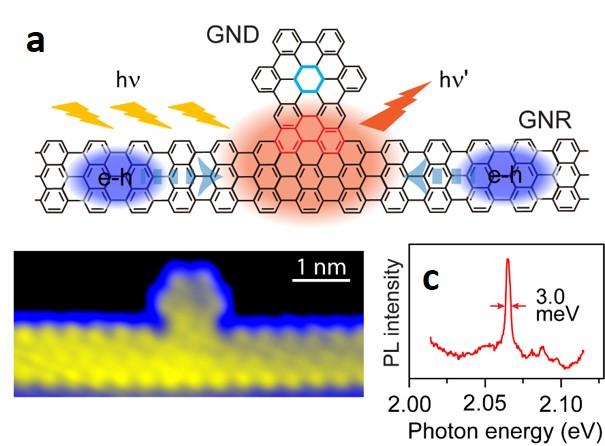
a: Sketch of photogenerated excitons in the GNR traveling ballistically to the junction of GNR-GND and recombining to emit photons with an energy of h’ defined by the quantum-well-like sates at the junction. b: STM image of a GNR-GND junction fused covalently to the GNR edge.
c: Ultra-narrow PL from the GNR-GND junction with a peak energy of 2.07 eV and linewidth of 3 meV at 4 K.
c: Ultra-narrow PL from the GNR-GND junction with a peak energy of 2.07 eV and linewidth of 3 meV at 4 K.
Scientific Achievement
A bottom-up approach for coupling graphene nanodots (GND) covalently at the edges of graphene nanoribbons (GNR) to create quantum-well-like states for well-defined narrow-band light emission.
Significance and Impact
This work establishes a new strategy to achieve narrow-band emission by engineering interface states of mixed-dimensional GNR-GND heterojunctions with atomic precision.






